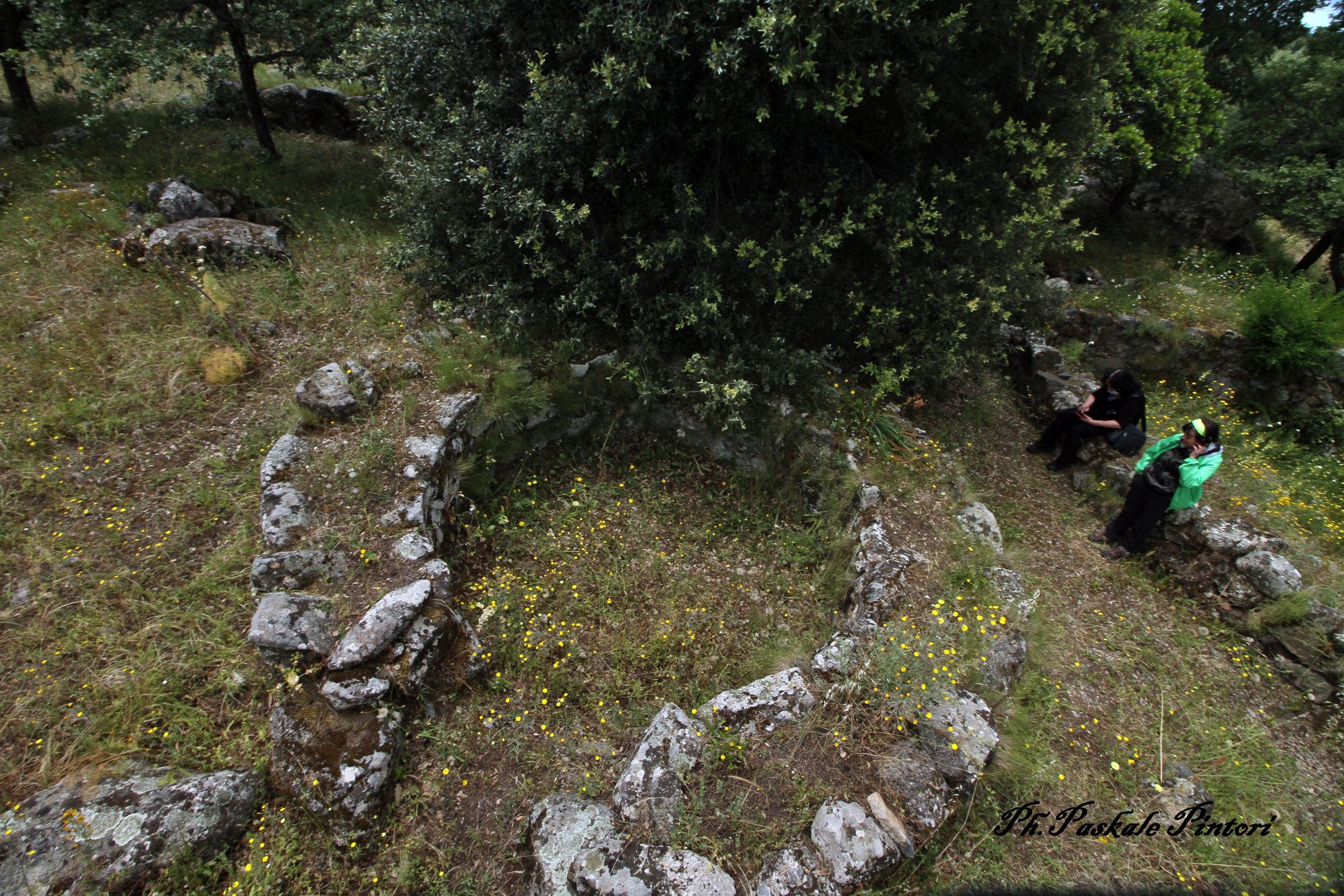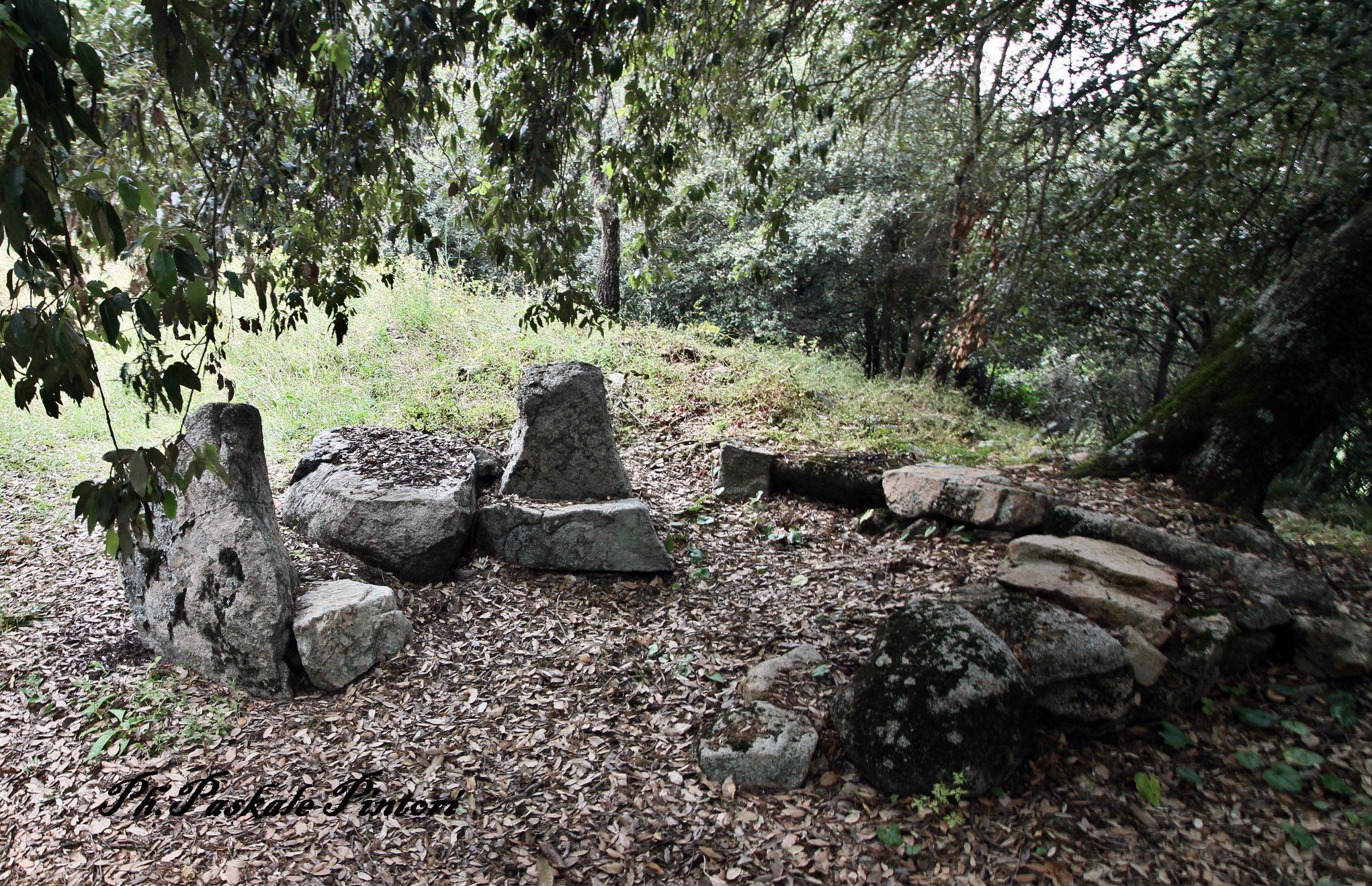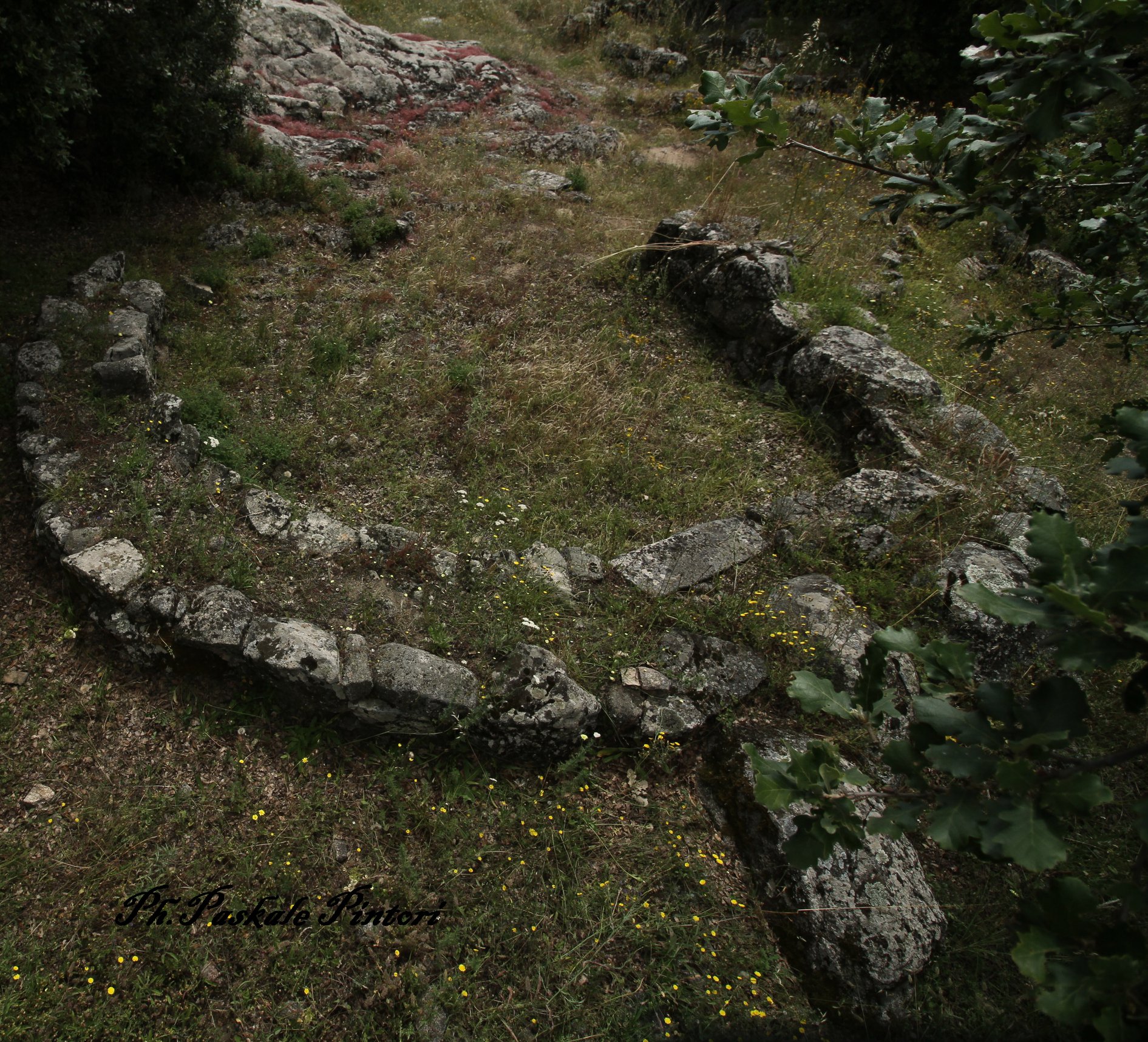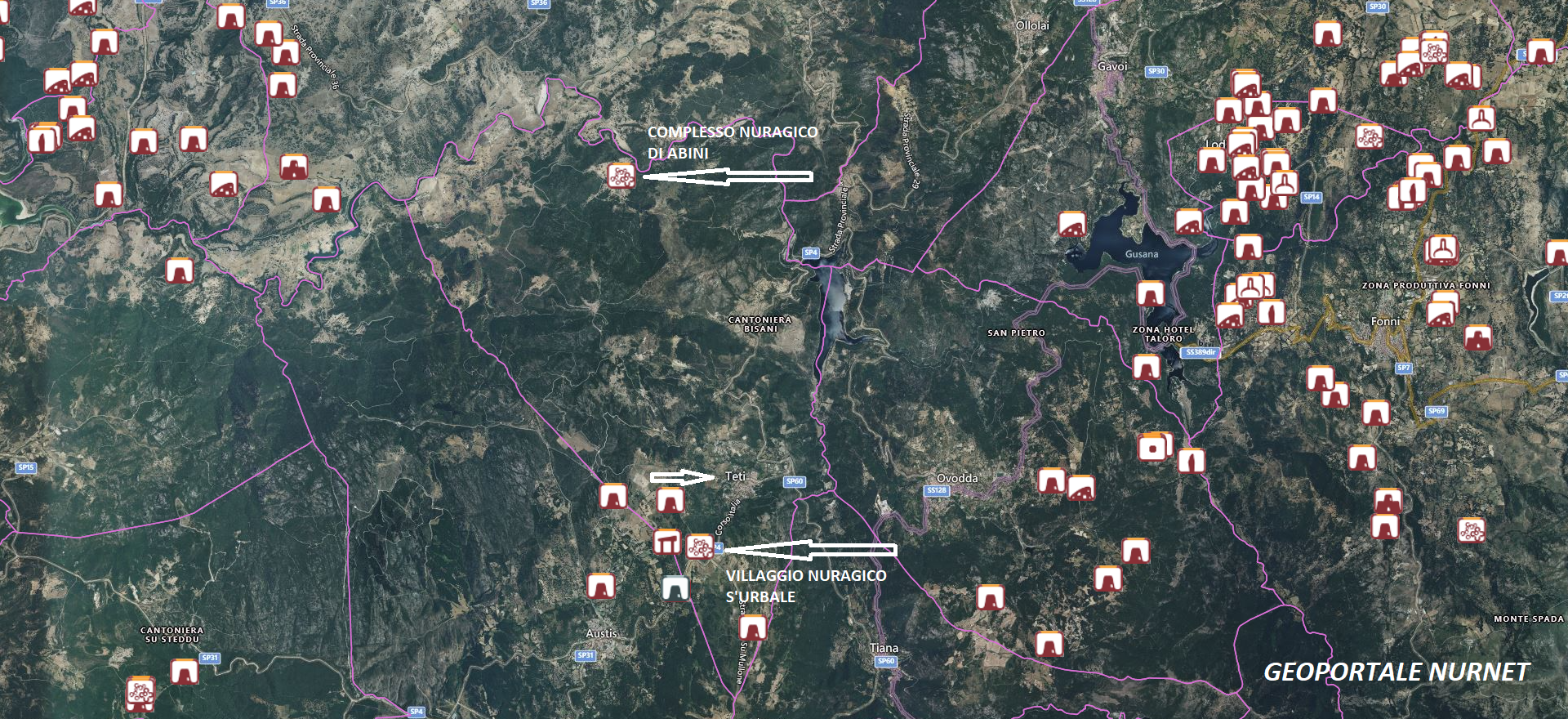64.2 and 71.2: The village-sanctuary of Abini is one of the most famous and important of the nuragic Sardinia. It consists of numerous huts and a sacred well protected by a fence. The huts are predominantly circular in plan. The roofing of the rooms was made of poles and brushwood; however, it is possible that in smaller spaces the ceiling was made with overhanging stone slabs. Some huts feature distinctive elements, such as a long bench seat along the inner wall perimeter and a basin in a central position; others have yielded copper scraps, demonstrating that they were places for metal smelting… Access to the well was from the smaller sector, which does not show particular architectural features, while the larger one is equipped with a bench-seat. The smaller sector in turn communicates with a large enclosure shaped like three-quarters of an ellipse, also provided with a bench-seat… Near the large enclosure, numerous squared blocks of worked volcanic rock can be seen, hidden in the spoil or incorporated into modern dry stone walls. Some of them show engravings and interlocking teeth, similar to those found in other Sardinian wells with isodomic structure. The large quantity of bronze objects retrieved from the excavations attest to the metallurgical skills acquired by the local populations and the particularly important role of the village-sanctuary, which attracted populations from a vast territory.
The village currently counts about fifty huts. The rooms have a circular plan and are mostly built with rows of locally quarried granite blocks that are roughly hewn (remaining height m 1/1.50). They often incorporate outcropping rock masses to provide greater stability to the structures. The roofing was made of poles and brushwood, as in the current “pinnettas” of shepherds. Clay and cork were used as insulating materials for the roofs and interiors. The most recent excavation campaigns have focused on 11 rooms located in the highest part of the hill, as this sector of the village – given the roughness of the terrain – had not been disturbed by agricultural work and thus offered the possibility to investigate still intact stratigraphic situations… A hut from S’Urbale has been faithfully reconstructed, including the furnishings, at the civic archaeological museum of Teti. (Sardegna Cultura)
The photos of the nuragic complex of Abini are by Andrea Mura-Nuragando and Bruno Sini. Those of the nuragic village S’Urbale are by Bruno Sini.










